Best Functional Programming Books to Buy in December 2025
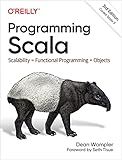
Programming Scala: Scalability = Functional Programming + Objects



Programming in Scala Fifth Edition


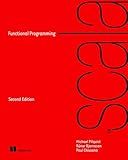
Functional Programming in Scala, Second Edition


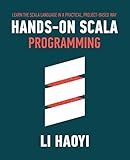
Hands-on Scala Programming: Learn Scala in a Practical, Project-Based Way


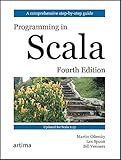
Programming in Scala


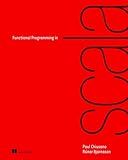
Functional Programming in Scala


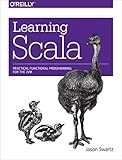
Learning Scala: Practical Functional Programming for the JVM


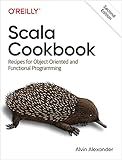
Scala Cookbook: Recipes for Object-Oriented and Functional Programming


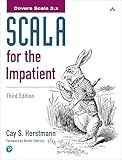
Scala for the Impatient


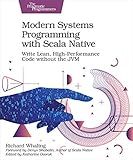
Modern Systems Programming with Scala Native: Write Lean, High-Performance Code without the JVM


In Scala, the functions fold and reduce are powerful tools for aggregating values in collections. Both functions can be applied to iterables, such as lists, arrays, and sets, to process the elements and return a single result.
- Fold: The fold function combines the elements of a collection with a specified binary operation, starting from an initial value. It applies the operation to the initial value and the first element, then uses the result as the first parameter for the next element, and so on, until all elements are processed. The final result is returned. The general syntax for fold is: collection.fold(initialValue)(binaryOperation) For example, let's say we have a list of numbers [1, 2, 3, 4, 5], and we want to sum them using fold. We can do it like this: val numbers = List(1, 2, 3, 4, 5) val sum = numbers.fold(0)(_ + _) println(sum) // Output: 15 In this case, the initial value is 0, and the binary operation is addition (_ + _). The fold function accumulates the sum of all elements in the list and returns 15.
- Reduce: The reduce function is similar to fold, but it doesn't require an explicit initial value. Instead, it uses the first element of the collection as the initial value and applies the binary operation to it and the second element. It then uses the result as the first parameter for the next element, and so on, until all elements are processed. The final result is returned. The general syntax for reduce is: collection.reduce(binaryOperation) Let's consider the same example of summing a list of numbers using reduce: val numbers = List(1, 2, 3, 4, 5) val sum = numbers.reduce(_ + _) println(sum) // Output: 15 In this case, the initial value is implicitly set to the first element (1), and the binary operation is still addition (_ + _). The reduce function applies addition to the first element and the subsequent elements, resulting in the sum of 15.
Both fold and reduce are very flexible and can be used for various other purposes, such as finding the maximum/minimum element, calculating average, or concatenating strings. The choice between them depends on whether an initial value is required and the desired behavior when applied to an empty collection.
How to use 'reduceRight' in Scala?
In Scala, the reduceRight method is used to apply a binary operator to the elements of a collection from right to left, starting with the last element. It returns the final result after applying the binary operator to all elements.
Here's the syntax for using reduceRight in Scala:
collection.reduceRight(binaryOperator)
Here, collection refers to the collection on which you want to apply reduceRight, and binaryOperator is the binary operator that you want to apply to the elements.
Here's an example that demonstrates the usage of reduceRight:
val numbers = List(1, 2, 3, 4, 5) val sum = numbers.reduceRight((a, b) => a + b) println(sum) // Output: 15
In this example, reduceRight is used to calculate the sum of all elements in the numbers list. The binary operator (a, b) => a + b adds two elements together. reduceRight applies this operator from right to left, starting with the last element (5), then adds 4 to the result, then adds 3, and so on until it reaches the first element (1), producing the final sum of 15.
Note: reduceRight assumes that the binary operator is associative, as the order of application affects the result. If the operator is not associative, you may get unexpected results.
What is the return type of 'fold' function in Scala?
The return type of the 'fold' function in Scala is the same as the type of the initial value provided.
How to use 'foldLeft' in Scala?
The foldLeft function is used to apply a binary operator to each element in a collection, starting from the leftmost element and combining the results. Here's how you can use foldLeft in Scala:
- Import the necessary classes: import scala.collection.immutable.List
- Create a collection of elements: val numbers = List(1, 2, 3, 4, 5)
- Define an initial value and a binary operator for combining elements: val initialValue = 0 val sumFunc = (accumulator: Int, element: Int) => accumulator + element
- Use foldLeft to apply the binary operator to each element, starting with the initial value: val sum = numbers.foldLeft(initialValue)(sumFunc) The above line takes the numbers collection, applies the sumFunc to each element, starting with the initialValue, and returns the final result of the fold operation.
- Print the result: println(sum) // Output: 15
In this example, foldLeft is used to calculate the sum of all elements in the numbers collection. The initial value is set to 0, and the binary operator adds the current element to the accumulator.
Note: foldLeft is a left-associative operation, which means it processes the elements from left to right. If you need a right-associative operation, you can use foldRight instead.
